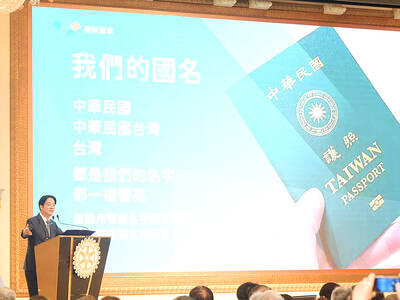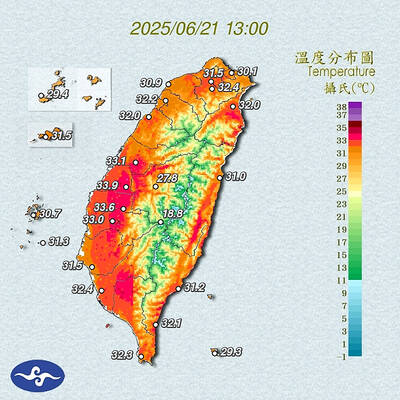NASA was warned nine years ago that the space shuttle could fail catastrophically if debris hit the vulnerable underside of its wings during liftoff -- the very scenario that may have brought down Columbia.
After receiving the warning, NASA made changes in materials and flight rules to lessen the risk of debris breaking loose, Paul Fischbeck, an engineering professor at Carnegie Mellon University who conducted the 1994 analysis, said Tuesday.
"There are very important tiles under there. If you lose the tiles on those stretches ... it can cause the shuttle to be lost," he said.
The underside of the left wing is where NASA is focusing its investigation into Saturday's disaster, which killed seven astronauts.
A spokesman at NASA's Johnson Space Center, David Drachlis, said Tuesday night that no one was available to comment on the report.
Also Tuesday, the space agency sent teams to check out reports of shuttle debris found as far west as California and Arizona -- material that could shed light on the earliest stages of Columbia's breakup. Later in the day, authorities in Texas said a 1.8m to 2.1m section of what they believe to be part of a shuttle wing was found in a pond east of Nacogdoches.
In Vernon Parish, Louisiana, a woman out walking found a small, ragged piece of fabric with a Star of David, Sheriff Sam Craft said. The symbol, in a circle between blue and silver bars, is the flag of the Israeli Air Force and is presumably from the suit of Israeli astronaut Ilan Ramon.
Investigators also are getting new military images of the spacecraft's fiery, dying streak across the country from an Apache helicopter.
Fischbeck and a colleague at Stanford University studied the damage caused by debris during the first 50 shuttle launches and concluded that on average, 25 thermal tiles per flight sustained damage of at least 2.5cm.
He said his risk analysis showed that the most vulnerable spots on the shuttle were the undersides of both wings close to the fuselage, and right under the crew compartment. To reach that conclusion, he weighed three factors: which tiles were most likely to be hit by debris, which tiles endured a lot of heat on atmospheric re-entry, and which tiles had critical systems underneath them.
It is not clear exactly where under the wing Columbia was hit, but just before the shuttle break up, temperature spikes were detected around the left wheel well, which is close to the fuselage, and on the left side of the fuselage itself.
Fischbeck said NASA "took a lot of our advice to heart" and made improvements such as changing the foam insulation on the top of the booster rockets and allowing less ice to be present on the fuel tanks before liftoff. Ice forms on the tank because of the super-cold liquid hydrogen and oxygen inside.
The investigation into the Columbia disaster is focusing on the possibility that a 1kg, 20cm chunk of foam insulation from the shuttle's external fuel tank fell off during liftoff and hit the left underside of the wing, causing damage to the thermal tiles that doomed the ship.
Fischbeck stressed that no one knows with absolute certainty yet whether the debris brought down Columbia or where precisely that debris hit.
Fischbeck's report looked at damage to the tiles from the insulating foam on the external fuel tank and the booster rockets, as well as from ice. He said while the tiles under the right wing had a slightly higher likelihood of being struck, "if the ones under the left wing were hit, then they were equally damaging to the orbiter."
Fischbeck said during the first 50 shuttle flights, from 1981 through 1992, the damage per flight ranged from three tiles to 150 tiles.
The foam and the tiles have been a source of concern at NASA practically from the start.
Over the years, foam insulation often damaged the tiles. In fact, soon after NASA stopped using Freon in the foam, for environmental reasons, Columbia sustained significant tile damage during a 1997 liftoff because of flyaway foam, according to a report by NASA engineer Gregory Katnik.
Katnik raised the possibility at the time that the new foam concoction was not compatible with the severe conditions of takeoff. The foam recipe apparently was altered somewhat after the 1997 incident.
"The thing of this is, almost since Day One, the insulation has been a pain. Pieces break off," said Seymour Himmel, a retired NASA executive who served two decades on an aerospace safety panel and looked into the potential dangers of the foam.
While the foam is a lightweight, polyurethane, spray-on material that goes on like shaving cream, it hardens like plastic foam. Given the speed at which shuttles hurtle into space during takeoff, it can have a devastating effect. Moreover, the black, silica glass fiber tiles that cover the belly of the shuttle are famously fragile, so much so that even a bump or nudge can cause cracks or dings.
NASA has said that during Columbia's mission, its engineers carefully analyzed the potential damage done by the foam and concluded that the crew was in no danger.
On Monday, Michael Kostelnik, deputy associate administrator for spaceflight, said that the chunk that fell from the tank and hit Columbia's tiles was ``probably the largest piece we've had'' of any shuttle mission.
Even some of the pros have trouble accepting the notion that foam could have resulted in the catastrophe.
"I can see it scratching or even gouging a couple of tiles. But God, the idea that it could compromise the system ... I just have a hard time believing that," said astronaut Mike Mullane, who rode Atlantis into orbit in 1988.
He recalled that a tip of one of his booster rockets broke off during launch and slammed into the belly of the shuttle, damaging a few hundred tiles. One came off entirely. Yet Atlantis and its crew of five still made it safely home.

FREEDOM OF NAVIGATION: The UK would continue to reinforce ties with Taiwan ‘in a wide range of areas’ as a part of a ‘strong unofficial relationship,’ a paper said The UK plans to conduct more freedom of navigation operations in the Taiwan Strait and the South China Sea, British Secretary of State for Foreign, Commonwealth and Development Affairs David Lammy told the British House of Commons on Tuesday. British Member of Parliament Desmond Swayne said that the Royal Navy’s HMS Spey had passed through the Taiwan Strait “in pursuit of vital international freedom of navigation in the South China Sea.” Swayne asked Lammy whether he agreed that it was “proper and lawful” to do so, and if the UK would continue to carry out similar operations. Lammy replied “yes” to both questions. The

‘OF COURSE A COUNTRY’: The president outlined that Taiwan has all the necessary features of a nation, including citizens, land, government and sovereignty President William Lai (賴清德) discussed the meaning of “nation” during a speech in New Taipei City last night, emphasizing that Taiwan is a country as he condemned China’s misinterpretation of UN Resolution 2758. The speech was the first in a series of 10 that Lai is scheduled to give across Taiwan. It is the responsibility of Taiwanese citizens to stand united to defend their national sovereignty, democracy, liberty, way of life and the future of the next generation, Lai said. This is the most important legacy the people of this era could pass on to future generations, he said. Lai went on to discuss

AMENDMENT: Climate change is expected to increase the frequency of high-temperature days, affecting economic productivity and public health, experts said The Central Weather Administration (CWA) is considering amending the Meteorological Act (氣象法) to classify “high temperatures” as “hazardous weather,” providing a legal basis for work or school closures due to extreme heat. CWA Administrator Lu Kuo-chen (呂國臣) yesterday said the agency plans to submit the proposed amendments to the Executive Yuan for review in the fourth quarter this year. The CWA has been monitoring high-temperature trends for an extended period, and the agency contributes scientific data to the recently established High Temperature Response Alliance led by the Ministry of Environment, Lu said. The data include temperature, humidity, radiation intensity and ambient wind,

SECOND SPEECH: All political parties should work together to defend democracy, protect Taiwan and resist the CCP, despite their differences, the president said President William Lai (賴清德) yesterday discussed how pro-Taiwan and pro-Republic of China (ROC) groups can agree to maintain solidarity on the issue of protecting Taiwan and resisting the Chinese Communist Party (CCP). The talk, delivered last night at Taoyuan’s Hakka Youth Association, was the second in a series of 10 that Lai is scheduled to give across Taiwan. Citing Taiwanese democracy pioneer Chiang Wei-shui’s (蔣渭水) slogan that solidarity brings strength, Lai said it was a call for political parties to find consensus amid disagreements on behalf of bettering the nation. All political parties should work together to defend democracy, protect Taiwan and resist